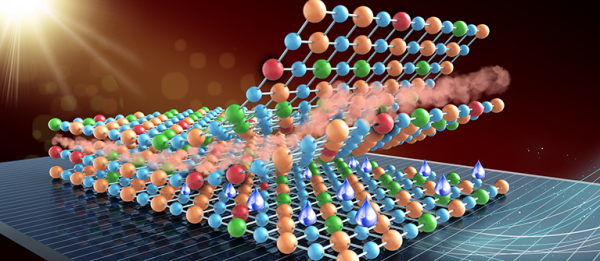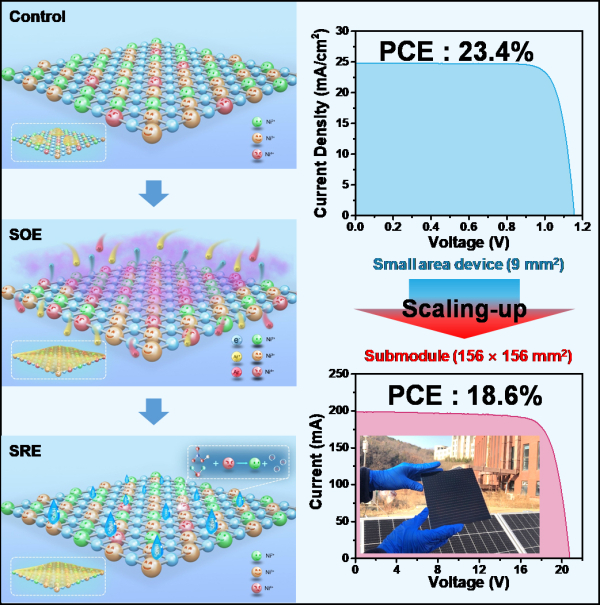·This research simultaneously achieves high photoelectric conversion efficiency and high stability of perovskite solar cells, laying a solid foundation for the further development and industrialization of perovskite cells.
According to the official website of the Chinese Academy of Sciences on August 3, the two institutes of the Chinese Academy of Sciences have made important progress in the field of perovskite solar cell research.
Recently, You Jingbi, a researcher at the Institute of Semiconductors of the Chinese Academy of Sciences, led a team to publish a paper in "Science", which achieved a significant improvement in the thermal stability of perovskite materials at 85 degrees Celsius.
Based on the obtained perovskite material with high stability and extended light absorption, You Jingbi's team developed a perovskite solar cell with a certified efficiency of 25.6%, which is the world's highest efficiency for single-junction perovskite solar cells published so far.
The battery devices were subjected to 1000 hours of exposure and accelerated aging at 85 degrees Celsius, respectively, resulting in retention of 96% and 80% of the initial efficiency.
You Jingbi's team found in their research that by introducing a small amount of rubidium chloride (RbCl) into the perovskite material, the common secondary phase PbI2 that causes perovskite instability can be transformed into a new thermal and chemical stability. of (PbI2)2RbCl.
By suppressing PbI2, the problem of the enlarged energy band caused by the strong confinement of the perovskite/PbI2 interface is eliminated, the band gap of the perovskite material is reduced, and the range of sunlight absorption is expanded.
According to the news released by the Dalian Institute of Chemical Physics, the photoelectric conversion efficiency of laboratory-sized perovskite solar cells has reached more than 25%. one of the development directions. However, it is difficult to prepare uniform and non-porous large-area charge transport layers by solution method at this stage.
In the study, it was found that the surface of the vacuum-prepared nickel oxide hole transport layer is relatively hydrophobic, which weakens the adhesion of the perovskite precursor solution, and at the same time, a large number of high-valent nickel ions existing on the surface of the nickel oxide will decompose the perovskite and form an interface barrier And lead to non-capacitive hysteresis effect, which ultimately affects device performance and stability.
In response to the above problems, the team of Wang Kai and Liu Shengzhong proposed a simple surface redox engineering to realize the regulation of the surface properties of electron beam evaporated nickel oxide films.
On the small-area trans cells fabricated on rigid and flexible substrates, the photoelectric conversion efficiencies reached 23.4% and 21.3%, respectively, with excellent stability.
In addition, the research team successfully fabricated a large-area perovskite cell module on a large-area substrate with an area of 156×156 mm^2 on the basis of their earlier work, with an energy conversion efficiency of 18.6% and excellent performance. stability.
This work is expected to facilitate the development of efficient and stable perovskite cell components.
According to the official website of the Chinese Academy of Sciences on August 3, the two institutes of the Chinese Academy of Sciences have made important progress in the field of perovskite solar cell research.
Recently, You Jingbi, a researcher at the Institute of Semiconductors of the Chinese Academy of Sciences, led a team to publish a paper in "Science", which achieved a significant improvement in the thermal stability of perovskite materials at 85 degrees Celsius.

High-performance large-area perovskite solar cell modules prepared by Dalian Institute of Chemistry
Recently, associate researcher Wang Kai and researcher Liu Shengzhong's team of the Thin Film Solar Cell Research Group of Dalian Institute of Chemical Physics, Chinese Academy of Sciences used slot coating preparation technology, combined with the surface redox strategy of vacuum nickel oxide thin film, to prepare high-performance large-area perovskite Mine solar cell modules. A related paper was published in the academic journal Joule.Based on the obtained perovskite material with high stability and extended light absorption, You Jingbi's team developed a perovskite solar cell with a certified efficiency of 25.6%, which is the world's highest efficiency for single-junction perovskite solar cells published so far.
The battery devices were subjected to 1000 hours of exposure and accelerated aging at 85 degrees Celsius, respectively, resulting in retention of 96% and 80% of the initial efficiency.
You Jingbi's team found in their research that by introducing a small amount of rubidium chloride (RbCl) into the perovskite material, the common secondary phase PbI2 that causes perovskite instability can be transformed into a new thermal and chemical stability. of (PbI2)2RbCl.
By suppressing PbI2, the problem of the enlarged energy band caused by the strong confinement of the perovskite/PbI2 interface is eliminated, the band gap of the perovskite material is reduced, and the range of sunlight absorption is expanded.

High-performance large-area perovskite solar cell modules prepared by Dalian Institute of Chemical Technology
This research simultaneously achieves high photoelectric conversion efficiency and high stability of perovskite solar cells, laying a solid foundation for the further development and industrialization of perovskite cells.According to the news released by the Dalian Institute of Chemical Physics, the photoelectric conversion efficiency of laboratory-sized perovskite solar cells has reached more than 25%. one of the development directions. However, it is difficult to prepare uniform and non-porous large-area charge transport layers by solution method at this stage.
In the study, it was found that the surface of the vacuum-prepared nickel oxide hole transport layer is relatively hydrophobic, which weakens the adhesion of the perovskite precursor solution, and at the same time, a large number of high-valent nickel ions existing on the surface of the nickel oxide will decompose the perovskite and form an interface barrier And lead to non-capacitive hysteresis effect, which ultimately affects device performance and stability.
In response to the above problems, the team of Wang Kai and Liu Shengzhong proposed a simple surface redox engineering to realize the regulation of the surface properties of electron beam evaporated nickel oxide films.
On the small-area trans cells fabricated on rigid and flexible substrates, the photoelectric conversion efficiencies reached 23.4% and 21.3%, respectively, with excellent stability.
In addition, the research team successfully fabricated a large-area perovskite cell module on a large-area substrate with an area of 156×156 mm^2 on the basis of their earlier work, with an energy conversion efficiency of 18.6% and excellent performance. stability.
This work is expected to facilitate the development of efficient and stable perovskite cell components.



Comments